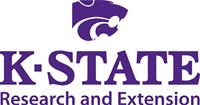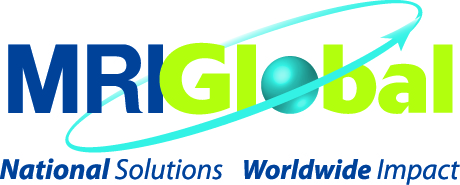National Bio and Agro-Defense Facility (NBAF)
 NBAF, the National Bio and Agro-Defense Facility, soon to come to Manhattan, KS, will serve to replace the Federal government’s current high-risk biological research facility located in Plum Island, New York. The Plum Island facility, constructed in the 1950’s, is now considered inadequate due to its small size and dilapidated physical condition. The Plum Island facility lacks Bio-Safety Level 4 (BSL 4) capabilities, which are necessary for the research of human and animal diseases to which no known cure exists. NBAF’s overall mission is to protect the long-term health of animals and of the public through research on animal and zoonotic (capable of being transferred from animals to humans) diseases.
NBAF, the National Bio and Agro-Defense Facility, soon to come to Manhattan, KS, will serve to replace the Federal government’s current high-risk biological research facility located in Plum Island, New York. The Plum Island facility, constructed in the 1950’s, is now considered inadequate due to its small size and dilapidated physical condition. The Plum Island facility lacks Bio-Safety Level 4 (BSL 4) capabilities, which are necessary for the research of human and animal diseases to which no known cure exists. NBAF’s overall mission is to protect the long-term health of animals and of the public through research on animal and zoonotic (capable of being transferred from animals to humans) diseases.
Among the numerous diseases to be studied in Manhattan are foot-and-mouth disease, classical swine fever, African swine fever, and contagious bovine pleuropneuomonia. NBAF will be operated under the authority of the United States Department of Homeland Security (DHS) in cooperation with the United State Department of Agriculture, and will be located on the campus of Kansas State University north of the current Bio-Research institute.
For Additional Information, please visit NBAF.
Center of Excellence for Emerging and Zoonotic Animal Diseases
 CEEZAD was created to enhance the capability of the US Department of Homeland Security (DHS) by developing “state of the art” countermeasures for high priority emerging and zoonotic animal diseases. We aim to achieve this mission with the following approaches:
CEEZAD was created to enhance the capability of the US Department of Homeland Security (DHS) by developing “state of the art” countermeasures for high priority emerging and zoonotic animal diseases. We aim to achieve this mission with the following approaches:
- Surveillance + Detection + Response = Resilience
- Proactive, not reactive
- 21st Century Technology for 21st Century Problems
- TTTTT
- Trans-boundary
- Trans-lational
- Trans-dependence
- Trans-species
- Trans-disciplinary
 MRIGlobal, an internationally acclaimed center for applied scientific research and
technology development, is an independent, not-for-profit laboratory that has
conducted scientific research for government and industry since 1944. Its
programs span in the following areas:
MRIGlobal, an internationally acclaimed center for applied scientific research and
technology development, is an independent, not-for-profit laboratory that has
conducted scientific research for government and industry since 1944. Its
programs span in the following areas:
MRIGlobal performs contract research and development, test and evaluation, operations and management services for government and industry.
Headquartered in Kansas City, Mo., MRIGlobal has additional laboratories and offices in Florida and Maryland, and has managed and operated the National Renewable Energy Laboratory for the U.S. Department of Energy since 1977. NREL is located in Golden, Co.

The
Stowers Institute for Medical Research aspires to be one of the most innovative biomedical research facilities in the world. The Institute conducts basic research into complex genetic systems to unlock the mysteries of disease and find the keys to their causes, treatment and prevention. It was founded by Jim and Virginia Stowers, two cancer survivors who decided to dedicate their fortune to supporting the basic research that will provide long-term solutions to gene-based diseases. The Stowers Institute opened its doors to the first scientific research teams in November 2000 after completion of its $300 million, state-of-the-art research facility in Kansas City, Missouri.
Today, the Institute houses 20 independent research programs and three technology development programs, including bioinformatics, proteomics and imaging. Of the nearly 550 Institute members, 370 are scientific staff: principal investigators, technology center directors, postdoctoral research associates and fellows, pre-doctoral research associates, and technical support staff.
 The University of Kansas Medical Center Research Institute, Inc.
The University of Kansas Medical Center Research Institute, Inc. is a private, not-for-profit 501(c)(3) corporation established to promote and support medical research and faculty invention disclosures. Established by the University of Kansas Medical Center in 1992, the Research Institute administers federally-funded and privately-funded research projects and Clinical Trials within the University of Kansas Medical Center with a major objective of enhancing the research capability of the University of Kansas Medical Center faculty for the benefit of the public.
The Macromolecule and Vaccine Stabilization Center is a unique and innovative biotechnology center located within the Department of Pharmaceutical Chemistry at the University of Kansas.
The Stabilization Center's goal is to improve the stability of proteins, DNA, macromolecular assemblies, virus-like particles, viruses, and bacterial cells for pharmaceutical use.
The Stabilization Center's approach focuses on molecular events associated with changes in physical and chemical stability that lead to loss of activity or function.
The Stabilization Center's services range from complete preformulation and formulation studies to simple biophysical and biochemical characterization of potential biopharmaceuticals and vaccines.
- Preformulation and formulation studies
- Biophysical characterization of macromolecules and vaccines
- Physical stability
- Chemical stability
- Additional analytical characterization packages
- Diverse problem solving
Laboratories with state-of-the-art instruments are housed in the Multidisciplinary Research Building on the University of Kansas West Campus in Lawrence, and occupy 10,000 sq ft of modern laboratory space. A state-of-the-art Biological Safety Level 3 laboratory fully equipped for macromolecular formulation studies and an adjacent tissue culture facility are an integral part of the laboratory. We also have access to other KU facilities, including high resolution NMR (800 MHz), X-ray crystallography, mass spectrometry, microscopy, and protein production. Additional analytical characterization studies are carried out in collaboration with other KU laboratories.

The
National Swine Resource and Research Center (NSRRC) was established in 2003 to develop the infrastructure to ensure that biomedical investigators across a variety of disciplines have access to critically needed swine models of human health and disease. The NSRRC will also serve as a central resource for reagents, information and training related to use of swine models in biomedical research.
Functions of the NSRRC include:
Importation
- The NSRRC will import existing swine models of human health and disease
Rederivation
- Rederivation eliminates pathogens and improves the quality of the animal model for research projects
Health Monitoring
- The NSRRC will perform on-going health monitoring to assure maintenance of a pathogen-free status
Cryopreservation
- The NSRRC will cryopreserve and store gametes, embryos and somatic cells to prevent loss of valuable models
Distribution
- The Center will act as a repository and distribution center for high quality, pathogen-free pigs
Research
- Improved techniques for cryopreservation of pig reproductive cells and tissues
- Improved methods for the detection and elimination of microbial pathogens in pigs
- Development of improved methods for the production of transgenic and knockout pigs
PI-Driven Model Creation
- The center will create custom models for NIH-funded investigators
- Requests are evaluated by the Steering Committee and prioritized
- Animals are first distributed to the requesting PI, and then made available to others